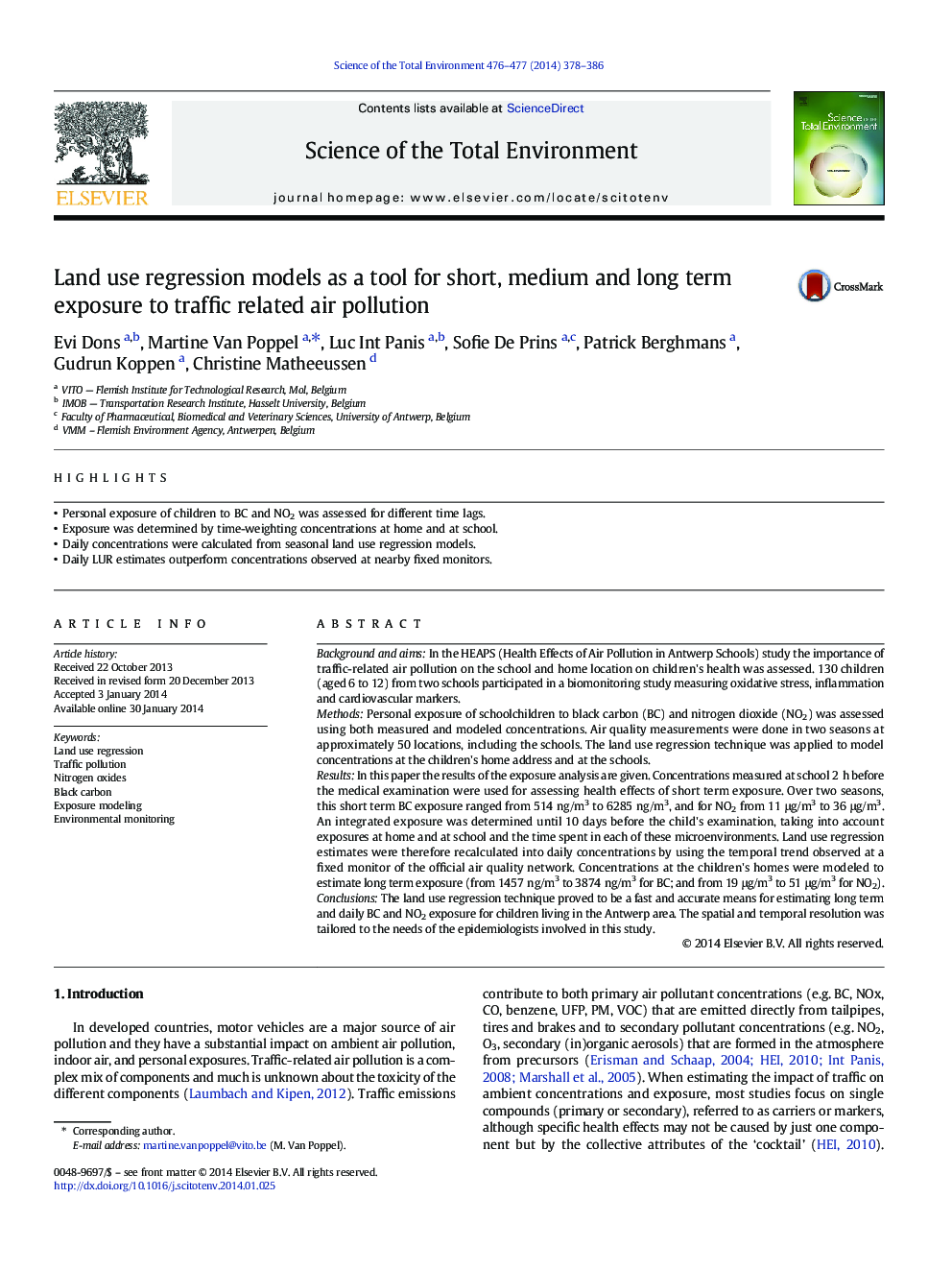| کد مقاله | کد نشریه | سال انتشار | مقاله انگلیسی | نسخه تمام متن |
|---|---|---|---|---|
| 4428553 | 1619789 | 2014 | 9 صفحه PDF | دانلود رایگان |
• Personal exposure of children to BC and NO2 was assessed for different time lags.
• Exposure was determined by time-weighting concentrations at home and at school.
• Daily concentrations were calculated from seasonal land use regression models.
• Daily LUR estimates outperform concentrations observed at nearby fixed monitors.
Background and aimsIn the HEAPS (Health Effects of Air Pollution in Antwerp Schools) study the importance of traffic-related air pollution on the school and home location on children's health was assessed. 130 children (aged 6 to 12) from two schools participated in a biomonitoring study measuring oxidative stress, inflammation and cardiovascular markers.MethodsPersonal exposure of schoolchildren to black carbon (BC) and nitrogen dioxide (NO2) was assessed using both measured and modeled concentrations. Air quality measurements were done in two seasons at approximately 50 locations, including the schools. The land use regression technique was applied to model concentrations at the children's home address and at the schools.ResultsIn this paper the results of the exposure analysis are given. Concentrations measured at school 2 h before the medical examination were used for assessing health effects of short term exposure. Over two seasons, this short term BC exposure ranged from 514 ng/m3 to 6285 ng/m3, and for NO2 from 11 μg/m3 to 36 μg/m3. An integrated exposure was determined until 10 days before the child's examination, taking into account exposures at home and at school and the time spent in each of these microenvironments. Land use regression estimates were therefore recalculated into daily concentrations by using the temporal trend observed at a fixed monitor of the official air quality network. Concentrations at the children's homes were modeled to estimate long term exposure (from 1457 ng/m3 to 3874 ng/m3 for BC; and from 19 μg/m3 to 51 μg/m3 for NO2).ConclusionsThe land use regression technique proved to be a fast and accurate means for estimating long term and daily BC and NO2 exposure for children living in the Antwerp area. The spatial and temporal resolution was tailored to the needs of the epidemiologists involved in this study.
Journal: Science of The Total Environment - Volumes 476–477, 1 April 2014, Pages 378–386
